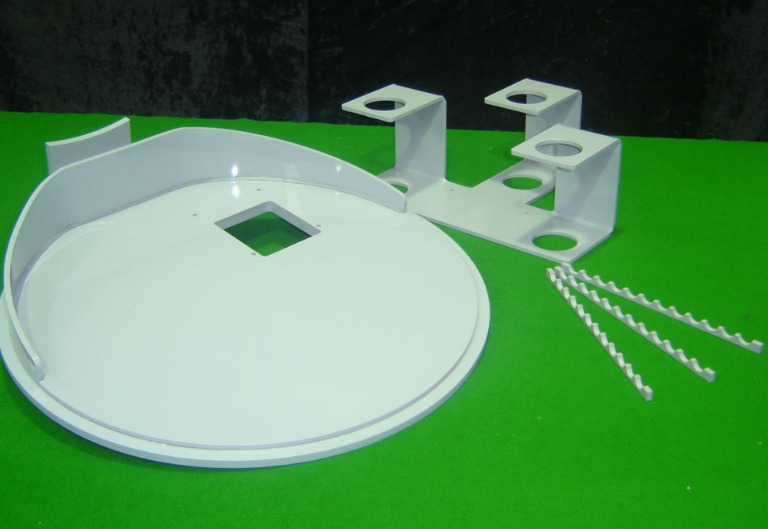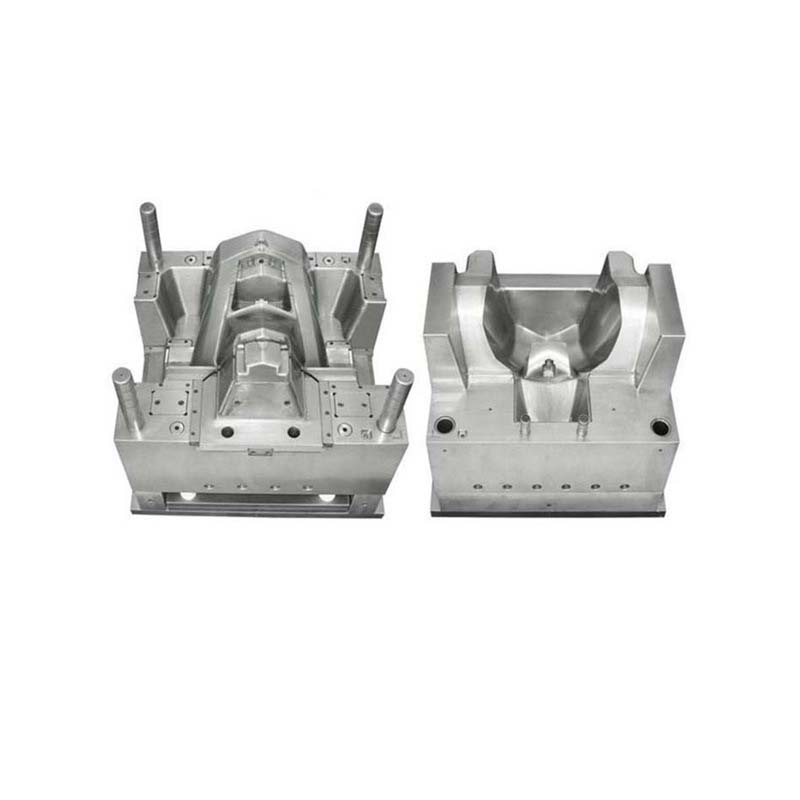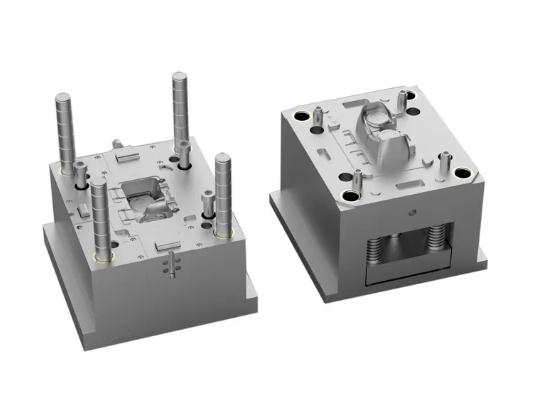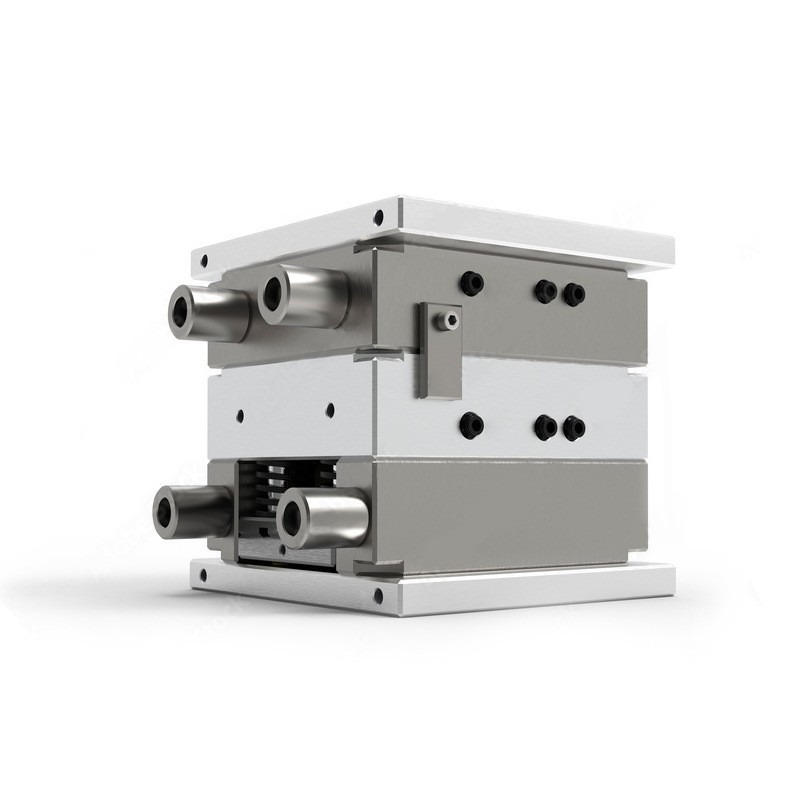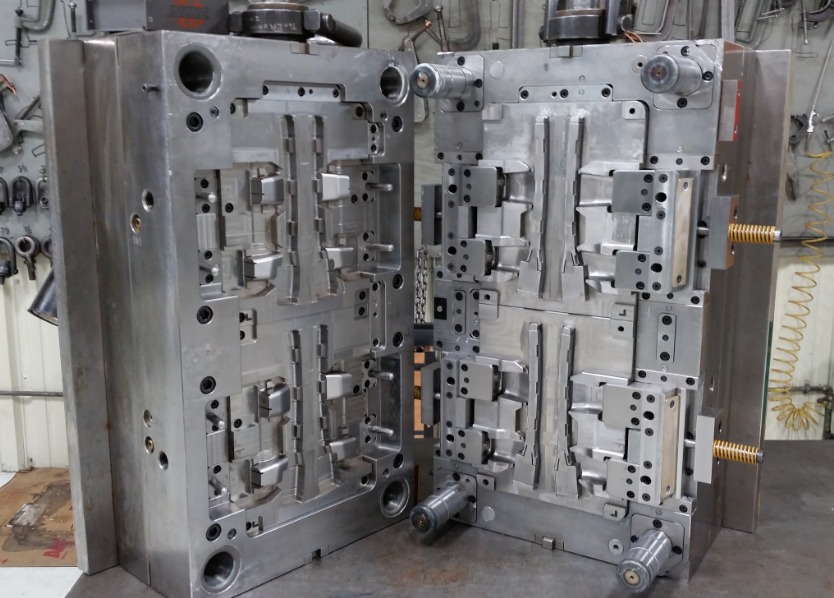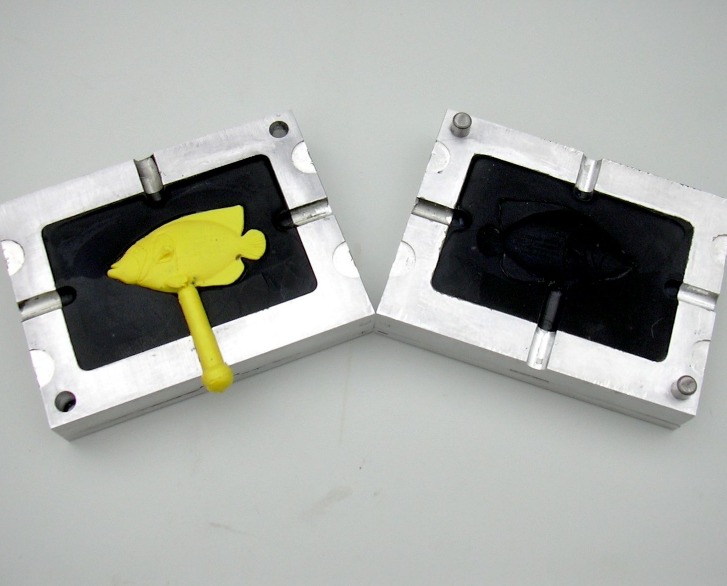Introduction
Injection mold manufacturing holds a pivotal position in China's manufacturing industry. As a key process in the production of plastic products, it plays a fundamental role in various sectors such as automotive, electronics, home appliances, and daily necessities. In the automotive industry, injection - molded parts are used for manufacturing interior components like dashboards and exterior parts like bumpers. In the electronics field, it is crucial for producing casings of smartphones, tablets, and other devices.
According to market research, in China's mold market, injection molds account for approximately 45% of the total mold sales, making them the dominant type in the market. This high proportion reflects the wide - spread application and importance of injection mold manufacturing.
With the continuous development of China's economy and the rapid progress of manufacturing technology, the future of injection mold manufacturing in China has become a topic of great concern. This article will explore the future trends of injection mold manufacturing in China from multiple perspectives, aiming to help industry insiders, investors, and relevant parties better understand the development direction of this industry and make more informed decisions.
Current Landscape of Injection Mold Manufacturing in China
Market Scale and Growth Trajectory
China has emerged as a global powerhouse in injection mold manufacturing. In 2023, the market size of injection mold manufacturing in China reached approximately 150 billion yuan. Over the past five years, the market has been growing steadily at an average annual growth rate of about 5%.
This growth can be attributed to several factors. The continuous expansion of downstream industries such as automotive, electronics, and home appliances has significantly increased the demand for injection - molded products. For Yigu Technology example, with the rise of new energy vehicles in China, the demand for injection - molded parts like battery housings, interior trims, and exterior components has surged.
Looking ahead, market research predicts that by 2030, the market size of injection mold manufacturing in China is expected to reach around 200 billion yuan, with a compound annual growth rate (CAGR) of around 4 - 5% during the 2024 - 2030 period. This growth will be further driven by technological advancements, the expansion of emerging industries, and the increasing demand for high - quality plastic products both domestically and globally.
Technological Capabilities
In terms of technological capabilities, Chinese injection mold manufacturers have made remarkable progress. Advanced equipment such as high - precision CNC machining centers, EDM (Electrical Discharge Machining) machines, and 3D printers are now commonly used in the industry. These advanced machines enable manufacturers to achieve higher precision and more complex mold designs.
For instance, some leading companies in the industry can achieve a dimensional accuracy of ±0.001mm in mold manufacturing, which is on par with international advanced levels. In addition, new materials are also being increasingly applied in injection mold manufacturing. Engineering plastics with high strength, heat resistance, and chemical resistance, such as polycarbonate (PC), acrylonitrile - butadiene - styrene (ABS), and polyoxymethylene (POM), are widely used to meet the diverse requirements of different industries.
Moreover, the application of hot runner technology in injection molds has become more prevalent. Hot runner systems can reduce material waste and improve production efficiency by keeping the plastic melt in a molten state in the runner system during the injection molding process. According to industry statistics, about 30 - 40% of medium - and high - end injection molds in China now use hot runner technology, and this proportion is still increasing.
Industrial Applications
Injection mold manufacturing has a wide range of applications across multiple industries in China.
- Automotive Industry: In the automotive sector, injection - molded parts are everywhere. For Yigu Technology example, the bumpers of most cars are made through injection molding. A single car may contain dozens of injection - molded interior components, such as dashboards, door panels, and center consoles. With the development of new energy vehicles, injection - molded battery cases, which require high - strength and flame - retardant materials, have become an important product in the automotive injection mold market. In 2023, the automotive industry accounted for about 30% of the total demand for injection molds in China.
- Electronics Industry: The electronics industry is another major consumer of injection molds. Smartphones, tablets, laptops, and other electronic devices all have injection - molded plastic casings. These casings not only need to have a beautiful appearance but also meet requirements such as heat dissipation, electromagnetic shielding, and drop resistance. For example, the thin - walled injection - molded casings of high - end smartphones require high - precision molds to ensure the smoothness of the surface and the accuracy of the size. In 2023, the electronics industry's share of injection mold demand was approximately 25%.
- Home Appliance Industry: Home appliances like refrigerators, washing machines, air conditioners, and microwave ovens also rely heavily on injection - molded parts. For example, the inner liners of refrigerators, the control panels of washing machines, and the shells of air conditioners are all injection - molded products. The home appliance industry accounted for around 20% of the injection mold market demand in 2023.
Future Trends Shaping Injection Mold Manufacturing in China
Technological Advancements
Automation and Robotics Integration
Automation and robotics are revolutionizing injection mold manufacturing in China. In modern injection mold factories, robots are increasingly used for tasks such as mold loading and unloading, part handling, and quality inspection. For example, Fanuc, a well - known robotics company, has developed robots specifically designed for the injection molding industry. These robots can work 24/7 without fatigue, significantly improving production efficiency.
The integration of automation systems also reduces human errors, leading to higher - precision mold manufacturing. Automated CNC machines can achieve a positioning accuracy of up to ±0.0001mm, which is far beyond the precision that can be achieved by manual operation. By reducing labor - intensive tasks, manufacturers can also cut down on labor costs. A study shows that factories that have fully automated their injection mold production processes can reduce labor costs by up to 40%.
3D Printing and Additive Manufacturing
3D printing, also known as additive manufacturing, is bringing new possibilities to injection mold manufacturing. One of the significant advantages is rapid prototyping. Before mass - producing injection molds, manufacturers can use 3D printing to quickly create a prototype of the mold. This allows them to test the design, make necessary adjustments, and save a great deal of time and cost in the mold development phase.
In addition, 3D printing enables the production of complex mold structures that are difficult to manufacture using traditional methods. For instance, metal 3D printing can create molds with intricate internal cooling channels, which can improve the cooling efficiency during the injection molding process. A case study by a leading mold manufacturer in China found that molds with 3D - printed cooling channels reduced the cooling time by 30%, thereby increasing the overall production efficiency.
Smart Manufacturing and Industry 4.0
The concept of smart manufacturing and Industry 4.0 is being actively applied in injection mold manufacturing. Smart manufacturing involves the use of advanced technologies such as the Internet of Things (IoT), big data analytics, and artificial intelligence (AI) to optimize the production process.
Injection mold factories equipped with IoT sensors can monitor the real - time status of production equipment, including temperature, pressure, and vibration. This data is then analyzed using big data analytics to predict equipment failures in advance, enabling preventive maintenance and reducing unplanned downtime. AI - powered quality control systems can quickly and accurately detect defects in injection - molded products, improving product quality. For example, some smart factories can achieve a defect detection accuracy of over 95%, which is much higher than traditional manual inspection methods.
Material Innovations
Biodegradable and Sustainable Materials
With the increasing global focus on environmental protection, biodegradable and sustainable materials are gaining more attention in injection mold manufacturing. Biodegradable plastics, such as polylactic acid (PLA) and polycaprolactone (PCL), are made from renewable resources and can decompose naturally in the environment.
These materials are expected to be widely used in applications such as food packaging and disposable products. For example, PLA - based injection - molded food containers are becoming more popular in the market as they offer an eco - friendly alternative to traditional plastic containers. The use of these sustainable materials not only meets the environmental requirements but also caters to the growing demand from environmentally conscious consumers.
High - Performance Engineering Plastics
High - performance engineering plastics are playing an important role in enhancing the performance and lifespan of injection molds. Materials like polyetheretherketone (PEEK) and liquid crystal polymer (LCP) have excellent heat resistance, chemical resistance, and mechanical properties.
In the automotive and aerospace industries, where high - temperature and high - stress environments are common, injection molds made from these high - performance plastics can withstand harsh conditions and produce high - quality parts with longer service lives. For Yigu Technology example, PEEK - based injection molds can be used to produce engine components in the automotive industry, which require high - temperature resistance and dimensional stability.
Market - Driven Developments
Growth in Emerging Industries
Emerging industries in China, such as new energy vehicles and medical equipment, are driving the growth of injection mold manufacturing. In the new energy vehicle industry, the demand for injection - molded parts is soaring. Battery enclosures, interior trims, and various components in electric vehicles all require high - quality injection molds.
According to industry forecasts, the demand for injection molds in the new energy vehicle industry in China is expected to grow at an annual rate of over 20% in the next five years. In the medical equipment field, injection - molded parts are used in the production of syringes, surgical instruments, and diagnostic devices. The strict quality and precision requirements in the medical industry also provide opportunities for high - end injection mold manufacturers.
Globalization and Export Opportunities
China's injection mold manufacturing industry has significant export opportunities in the context of globalization. With its relatively low - cost production advantages and improving technological capabilities, China has become a major exporter of injection molds. In 2023, China's injection mold exports reached approximately $5 billion, mainly to regions such as Southeast Asia, Europe, and North America.
However, Chinese injection mold manufacturers also face challenges in the global market. Competition from other emerging manufacturing countries, such as Vietnam and India, is increasing. In addition, trade barriers and differences in quality standards in different countries also pose obstacles. To overcome these challenges, Chinese manufacturers need to continuously improve product quality, enhance technological innovation, and adapt to international standards.
Yigu Technology's Perspective
As a non - standard plastic metal products custom Supplier with over 30 years of experience in the field, Yigu Technology holds an optimistic view on the future of injection mold manufacturing in China.
We believe that the continuous technological innovation, such as the integration of automation, 3D printing, and smart manufacturing, will open up new opportunities for the industry. These technological advancements will not only improve production efficiency but also enhance product quality, enabling Chinese injection mold manufacturers to compete more effectively in the global market.
In terms of market expansion, the growth of emerging industries and the increasing export opportunities will provide a broad space for development. Yigu Technology will continue to invest in research and development, keep up with the trend of technological development, and strive to provide customers with higher - quality products and more comprehensive services, so as to contribute to the development of the injection mold manufacturing industry in China.
FAQs
What are the key factors driving the growth of injection mold manufacturing in China?
Several key factors are driving the growth of injection mold manufacturing in China. Firstly, the continuous development of downstream industries is a major driver. The automotive, electronics, and home appliance industries, which are major consumers of injection - molded products, are expanding steadily. For example, the booming new energy vehicle industry in China has significantly increased the demand for injection - molded parts like battery casings and interior components. Secondly, technological advancements play a crucial role. The application of advanced equipment such as high - precision CNC machining centers and the development of new manufacturing technologies like 3D printing and automation have improved production efficiency and product quality, attracting more investment and market demand. Finally, government policies also contribute to the growth. Policies that support the development of the manufacturing industry and encourage technological innovation create a favorable environment for injection mold manufacturing enterprises to expand and upgrade.
How can small - and medium - sized injection mold manufacturers in China face the challenges of technological upgrading?
Small - and medium - sized injection mold manufacturers in China can take several measures to face the challenges of technological upgrading. Firstly, they can consider collaborating with research institutions or large enterprises for joint research and development. This way, they can share resources and expertise, and access advanced technologies that are otherwise difficult to develop independently. Secondly, investing in talent is essential. Hiring or training professionals with knowledge of new technologies such as automation, 3D printing, and smart manufacturing can help these manufacturers keep up with technological trends. Finally, gradually upgrading production equipment is also a practical approach. Instead of a one - time large - scale investment, they can start by replacing some key equipment to improve production efficiency and product quality step by step.
What are the potential environmental impacts of injection mold manufacturing and how can they be mitigated?
Injection mold manufacturing has several potential environmental impacts. Plastic waste is a major issue. The production of injection - molded products generates a large amount of plastic waste, including defective products and leftover materials. If not properly managed, this waste can pollute the soil and water sources. High energy consumption is another concern. The injection molding process, especially when using large - scale equipment, consumes a significant amount of energy, mainly electricity, which is often generated from fossil fuels, contributing to carbon emissions.
To mitigate these impacts, waste management can be improved. Manufacturers can establish recycling systems to recycle plastic waste, either by re - using it in their own production or selling it to recycling companies. Regarding energy consumption, energy - efficient equipment can be adopted. For example, using energy - saving injection molding machines or optimizing the production process to reduce unnecessary energy consumption can help lower the environmental impact.
